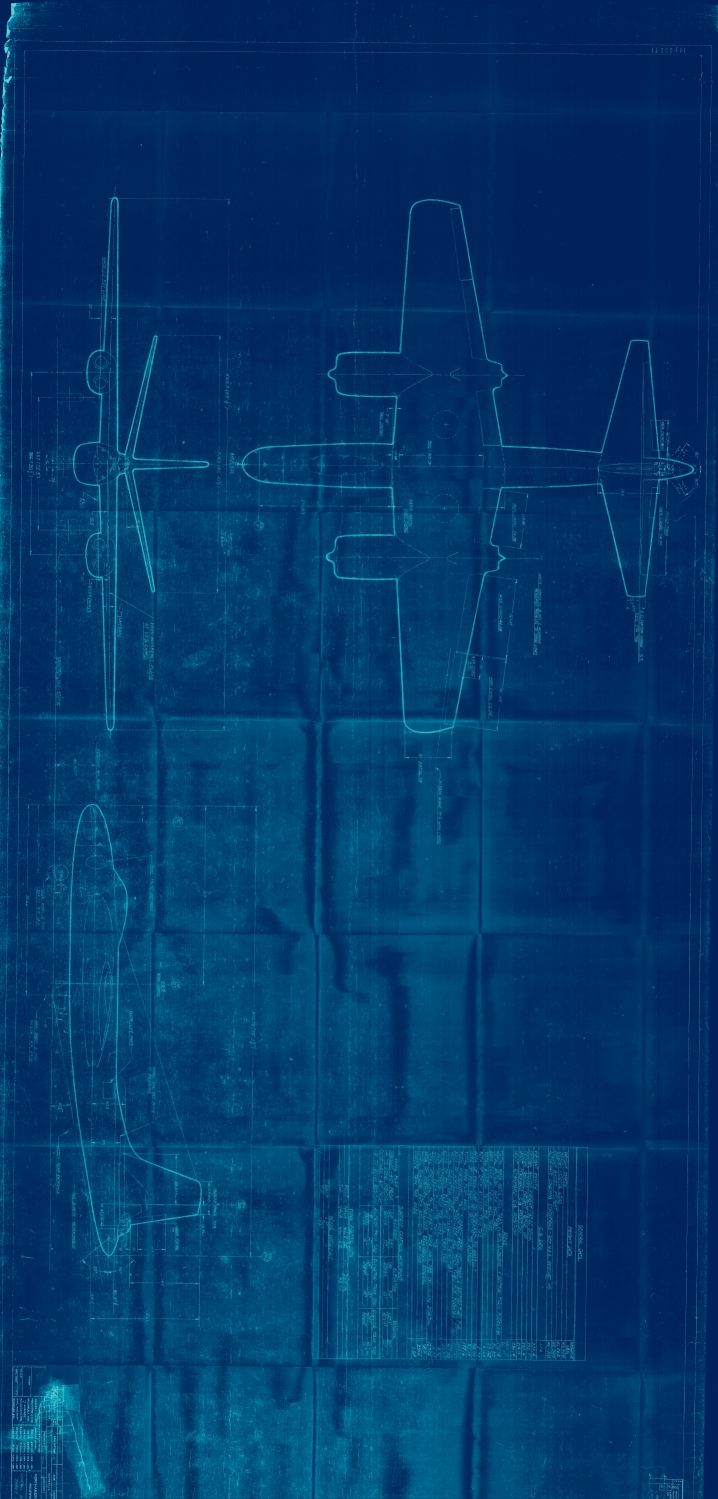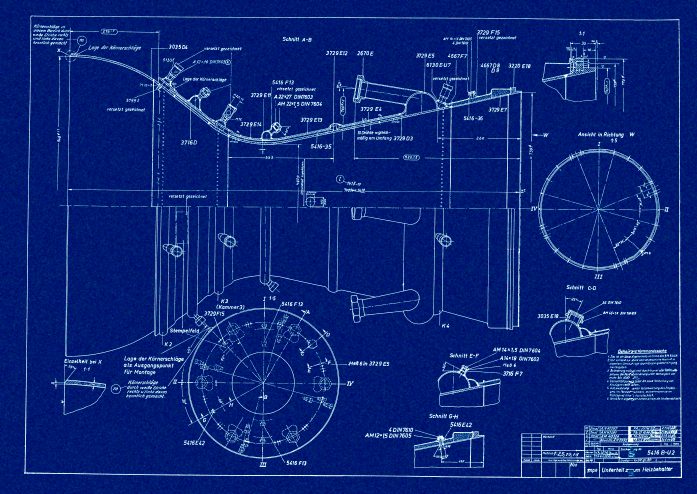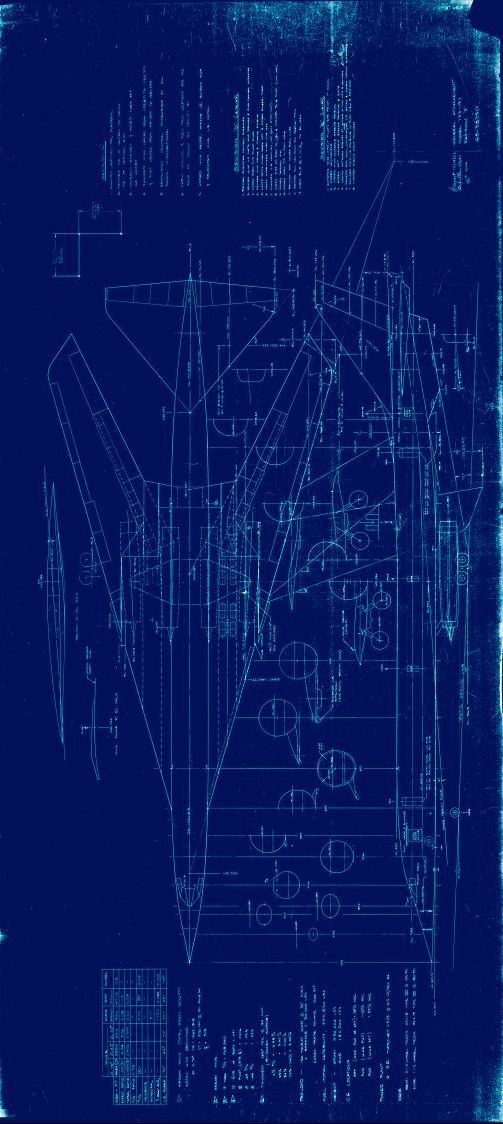Sadly, most available large-format diagrams are multi-generational black-and-white copies of the originals. The originals, up until the era of CAD and plotters, were typically hand drawn, ink on vellum. Finding one of these is a rarity. The next generation of drawings would have been the actual “blueprint,” with blue backgrounds and white-ish lines. These are cyanotype copies of the original vellum drawings, basically the photocopies of their day. And to my mind, more aesthetically pleasing than even the original drawings. So when I came into possession of the actual cyanotype B-29 and Minuteman blueprints, I made sure to have ’em scanned full size, full color. I figured the expense would be worth it since they’d sell well (oops).
Some of the other drawings I have are only available in grayscale. It has been my practice when preparing diagrams such as these for sale to go in and completely clean them, turning them into black-lines-on-white-background diagrams. Serviceable, but just not as satisfying to me as actual blueprints. So something else I’ve been tinkering with is “digitally reverse engineering” grayscale diagrams back into cyanotype blueprints. I have met with, I think, some success. Take for example the inboard profile of the Lockheed LS-200 space shuttle, previously posted here. With some work, I turned it into this:
Neat, eh? Thne “flaws” that I’d normally spend many hours cleaning out of the diagram now become assets, adding to the character of the image. In fact, when the same process is applied to a “pristine” diagram, the results aren’t as satisfying, sach as with the XFV-12 diagram:
Some random noise added to the mix helps a bit, but not quite enough, such as with the V-2 nozzle diagram:
Some drawings are in such bad shape that I’m honestly not sure if they are an improvement or not, such as the V-2 cutaway drawing:
Some produce rather odd “luminous” artifacts like with the B-45 diagram:

Some, though, show considerable promise, such as this Boeing 733-197 SST diagram:
And this Boeing 2707 SST:
And this North American F-107:
And this North American A2J diagram:
One forthcoming drawing set shows early Apollo hardware utilizing the Saturn C-3, requiring on-orbit assembly and refueling. The drawings are not originally in color, but they are of a quality that they can be turned into blueprints. So not the question is… is it something worth doing? If there’s sufficient interest, I’d do the color versions separately from the B&W, as well as go back to some of the earlier releases and make color versions of them as well.
Speak up, people!
8 Responses to “Blueprints *In* *Color*”
Sorry, the comment form is closed at this time.










l love blueprints. They feel human, mostly because one can see that the lettering is done by real humans. If I were going to download anything, I’d want in black and white because that’s easier to pint out.
The A-4 blueprint would be perfect for the wall over the desk here (right next to my wife’s Theresa Pollak print).
Love the coloring on the A2J blueprint.
Looking forward to those Boeing SST blueprints
Hmm. Rather a vastly lot less response than I’d hoped. Well, one more idea for the wastebasket.
Might be one more last gasp of this in the next day or four, but it’s probably best to just move on to the next unprofitable venture.
Ahh, you’ve entered your “Blue” phase in your art?
Seriously like the way those turned out.
Randy
I would buy the Saturn C-3 prints. Am a sucker for Saturn and its varients.
[…] some further tinkering on this project, I took some of the resulting files up to Logan to be printed. They were printed in tow […]
would like to get a high resolution-scan of the NA F-107A Ultra Sabre … any chance?